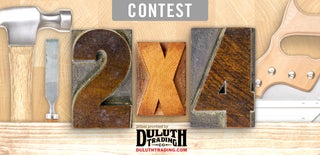Introduction: 2x4 Desk 8ft Long!
A new desk was a bit overdue and I took the chance to make it for the 2x4 contest.
No Screw Required!
It was alot of fun and took about two nights to build.
Step 1: Materials and Tools
- Thickness Planar
- Miter Saw
- Electric Hand Planar
- Orbital Sander
- Various Sand Paper
- Wood Glue (one bottle from Home Depot was enough)
- Carpenters Square
- Long and Short Clamps
- and alot of 2x4's (I got all of mine at Home Depot)
Step 2: Planing and Labeling
I started by planing all sides of the 2x4's.
Use caution when handling any power tools and always use safety equipment.
It took a very long time with only one person. It can be sped up significantly with two or three people.
I planed 1/16" off each side. ':
Planing all sides makes the wood have a completely flat surface to glue and clamp with.
It is not necessary to plane all sides. Only the sides that will be glued and clamped but it does cut down on sanding work if done correctly.
After all the 2x4's were planed I went through all of them and labeled which '2" side looked the best on all of them.
I particularly like the ones with knots and weird patterns. They give nice contrast when stained. They will serve as the top of the desk.
I put aside the ones that looked awesome on the '4" side since they would never be seen anyway. They will be shown off in another project.
I used one of these as the outside end as it is the only one you will see the 4" side on.
Step 3: Cutting to Size
After you have decided how tall, how wide and how long you would like your desk to be (if different), we can begin to cut down the 2x4's.
My desk was 30" tall and 8' long. I measured the width by number of 2x4's which was 18.
The pattern used to glue is a huge box joint.
I marked alternating 2x4's with cut lines as shown in the first picture.
I also counted and measured out all of the legs to be cut as well.
One leg will be long at 30" and the next will vary based on how much you planed your wood but about 26"(Measure).
I cut all of my stock at once to simplify the whole process.
Step 4: Glue the Pieces
After everything is cut we can begin to glue things together.
You can approach this by gluing the desk in sections or as one piece.
As one piece you would glue on one layer of 2x4 at a time until it reached completion.
I preferred the faster way.
I glued them all up in sections which took alot of clamps, a bit of space and a bit of rushing around before the glue set.
Make sure before gluing that you flip over the labeled good side to have it show as the desk top!
Also using a carpenters square will ensure you have a repeatable 90 degree angle on all sides so they will come together with little degree variation. Equals less sanding work.
The pictures explain it well.
Step 5: Final Glue Up
After waiting a few hours for the pieces to dry a bit, I remove all the clamps and began to fit the pieces together.
You must work fast for this part as you must have time to piece things together while the glue is exposed.
I added glue while piecing the table together (3 layers at a time).
When done I had the voids on the sides where the small legs went. I applied glue to both sides of the small legs and tucked them into their places.
When finished placing take a few minutes to line all surfaces up properly to reduce sanding work later.
Once the desk is placed correctly you can add the long clamps and tighten the whole desk together.
Now you wait 24hrs for the glue to set.
Step 6: Sanding, Finishing and Fixing Ooops'
If you are like me and decided you wanted a 31" desk then midway through your cuts forgot and started cutting 30" legs because thats what you wrote,...you might need to fix this.
I did so with a saw zaw, an electric planar and a orbital sander.
I measured the top and bottom of each side and drew a straight line at 30".
Then I got close to this line as closely as I dared with a saw zaw.
Then I got even closer to the line with an electric hand planar and finished with orbital sander.
When finishing the sides and top I first took off the staples left in the 2x4's from Home Depot.
Then I used a chisel to remove overflowed dry glue.
Then I used the electric hand planer on some of the high misaligned 2x4's. (Thankfully not much)
Then I went to town with the orbital sander going from 80 grit to 400 to leave a smooth finish.
It is now ready for staining, painting, clearing or any other finish you might like!
My finish requires a bit of a specialized tool...
Thanks for tuning in!

Participated in the
2x4 Contest

Participated in the
Homemade Gifts Contest 2015













